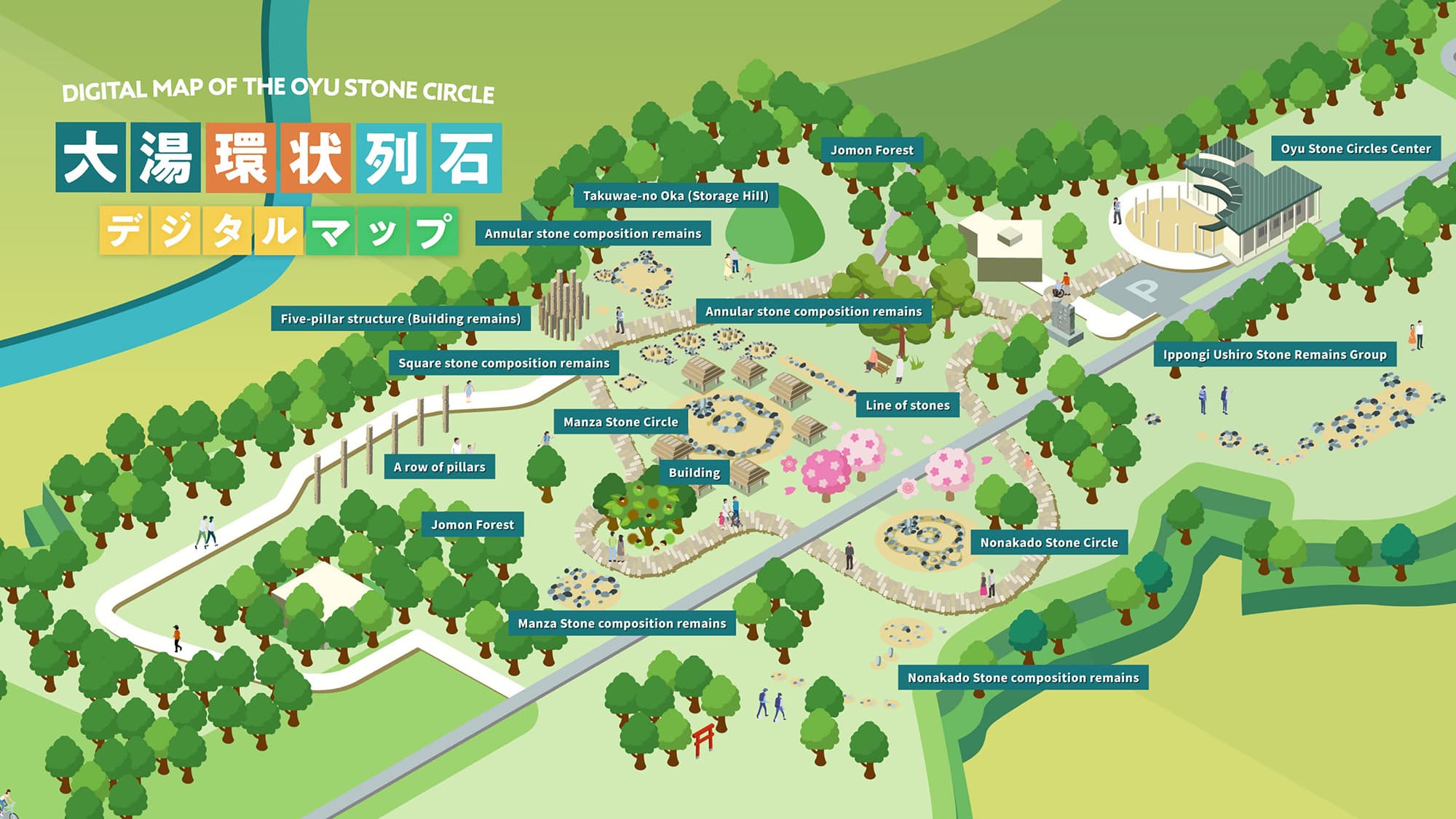
Introduction of the Oyu Stone Circles
The Oyu Stone Circles consist of two stone circles that
represent our nation’s Jomon remains.
The one is called the Manza stone circle, and the other one is
called the Nonakado stone circle.
Stone circles are remains made of arranged stones in circles as
the name tells, and are thought to have been special places for
rituals and cemeteries.
You can see the highlights and origins of the Oyu Stone Circles,
and an overall map of the site here.
Highlights
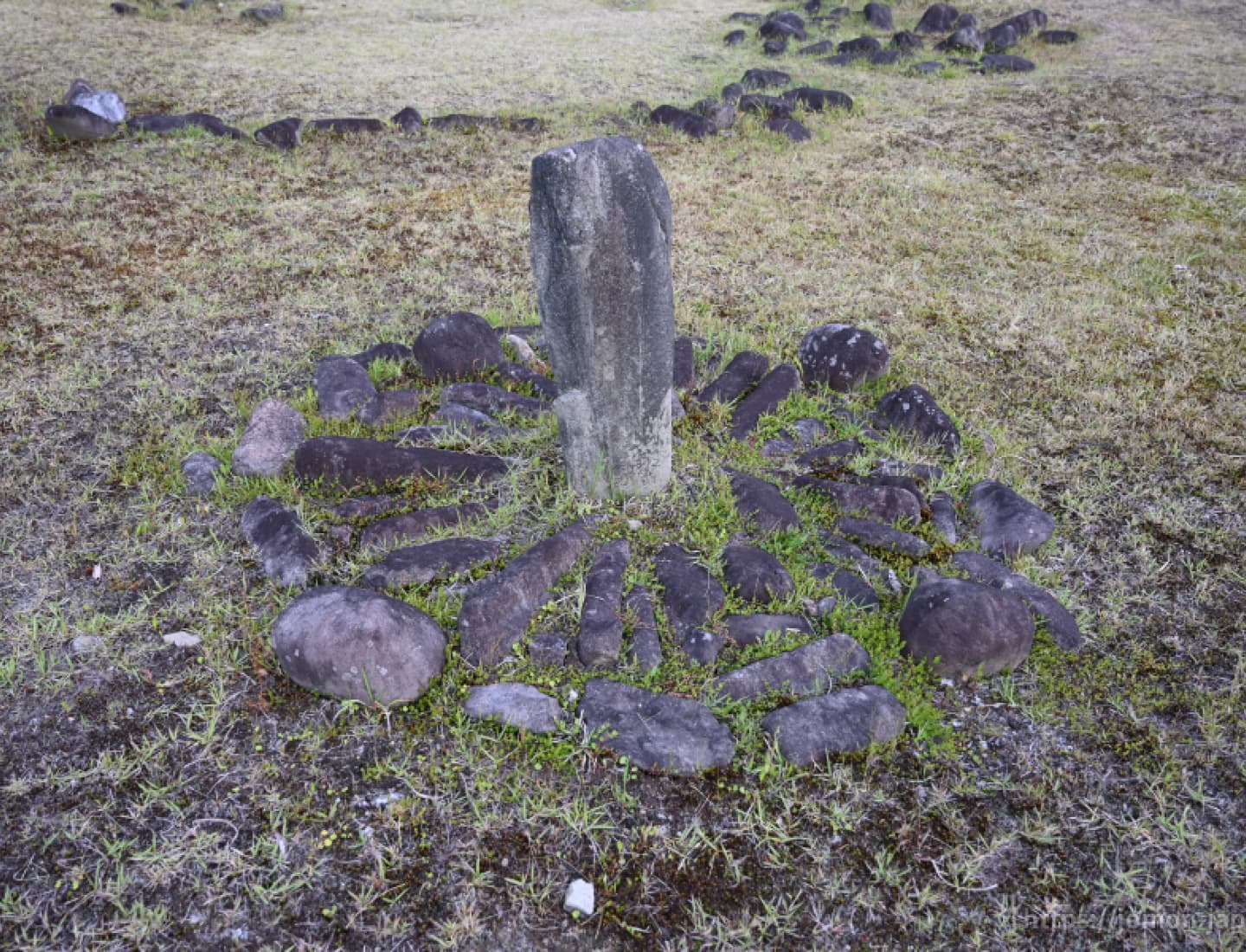
Manza stone circle / Nonakado stone circle
Two Stone Circles and Sundial-like Stonework
There are two stone circles in the site, they consist of various
patterns of stone arrangements that combine large and small
river rough stones into round, oval, and diamond shapes. One is
called the Manza stone circle, consisting of more than 100 stone
arrangements, and the other one is called the Nonakado stone
circle which is made of about 60 stone arrangements.
It is believed that each circular and square clumps of more than
10 stones were used as graves. About 6,500 river rough stones
are used in the Manza stone circle and about 2,200 in the
Nonakado stone circles.
There are arranged stones called sundial-like stonework in both
stone circles.
The line connecting the center of the two stone circles and both
sundial-like stonework coincides with the sunset direction of
the summer solstice.
Were the Jomon people conscious of the movement of the sun at
that time?
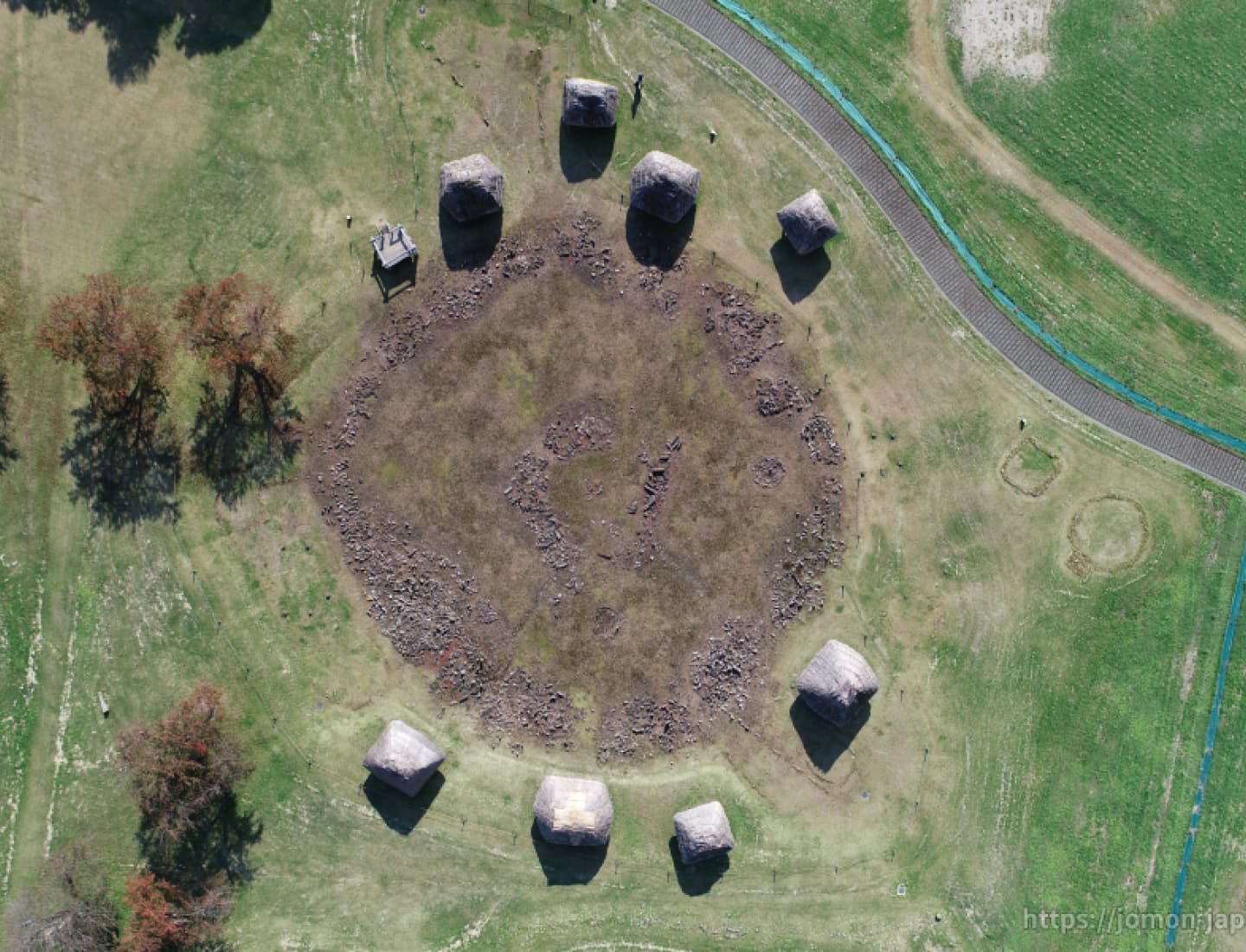
Traces of prayer of gratitude for nature
Excavation of numerous remains
In addition of the stone circles, remains of pit houses,
pillar-supported buildings, and peristylium have also been
found.All of these are important in considering the nature and
the characteristic of the Oyu Stone Circles, and some of them
have been reconstructed and maintained.
The pillar-supported buildings and some flask-shaped storage
pits were found around the stone circle, which suggests that the
Jomon people lived nearby. At the same time, many tools and
earthenware which may not have been used in everyday life, such
as clay figures and mushroom shaped clay objects, were found.
They are thought to wish the family happiness for a long time
and to express gratitude for nature.
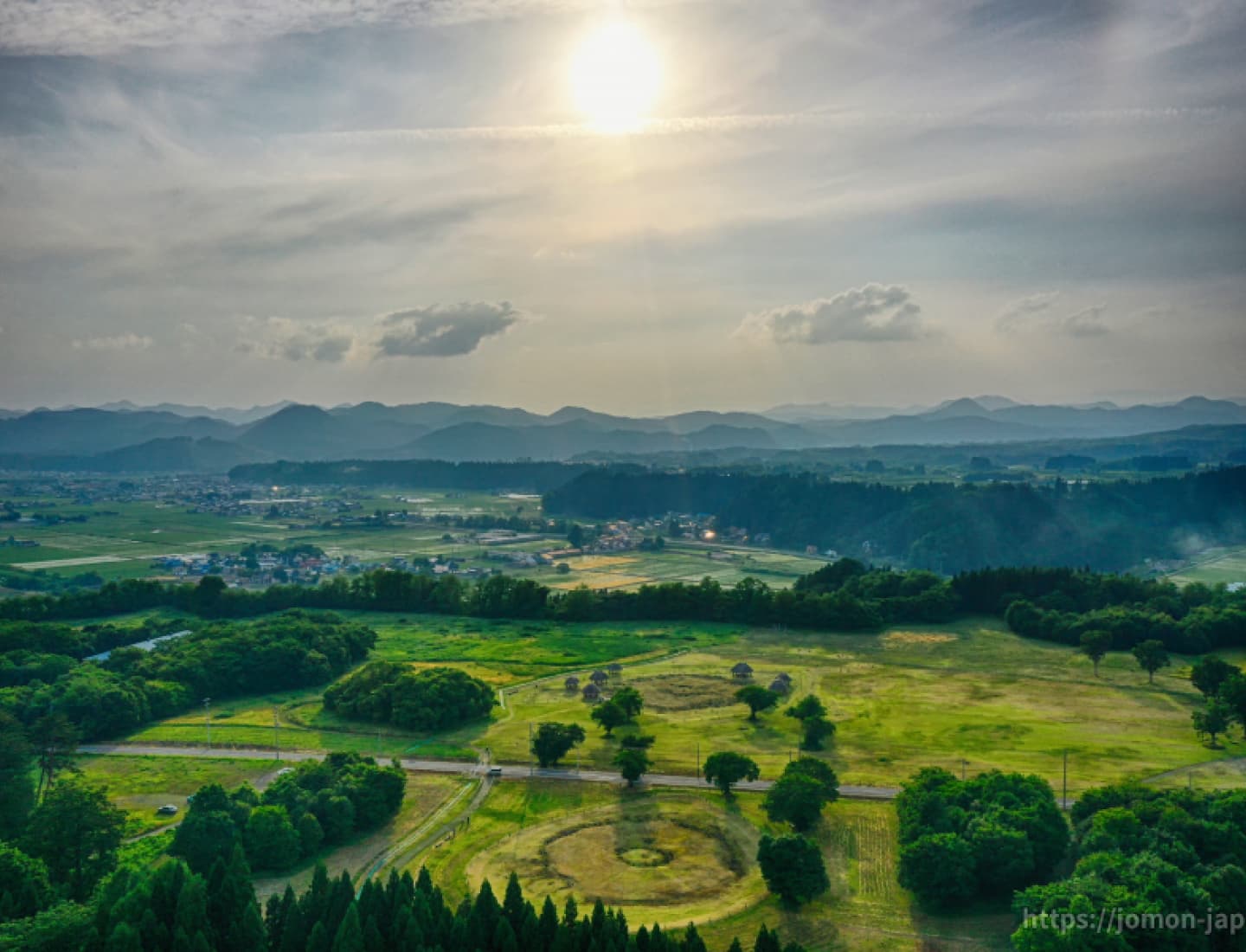
Located along the Oyu river,
vast ruins where you can
experience those days
If you stand between the two stone circle, you will see a forest
that has been restored from the Jomon period. There is a river
called the Oyu river by the plateau where the site is located,
and deciduous broad-leaved forests spread out in the hinterland.
In the distance, you can see the Ou Mountains to the east and
the Takamori Mountains to the west. There are no information
boards in the site in order to help you feel the atmosphere of
the Jomon period as much as possible.
If you take a leisurely stroll while surrounded by such vast
nature and prehistoric remains liberated from man-made
structures, you can experience the scenery and feel the breath
of the time as if it were in the Jomon period.
History of the site
Archaeological excavations
Since the Oyu Stone Circles were discovered in 1931, surveys and preservation activities continue to the present day, as a result of that the site was listed on the Nationally Designated Special Historic Site of Japan on July 19, 1956. In particular, the group of pillar-supported buildings found by the stone circles presented an important perspective for subsequent research on the site.
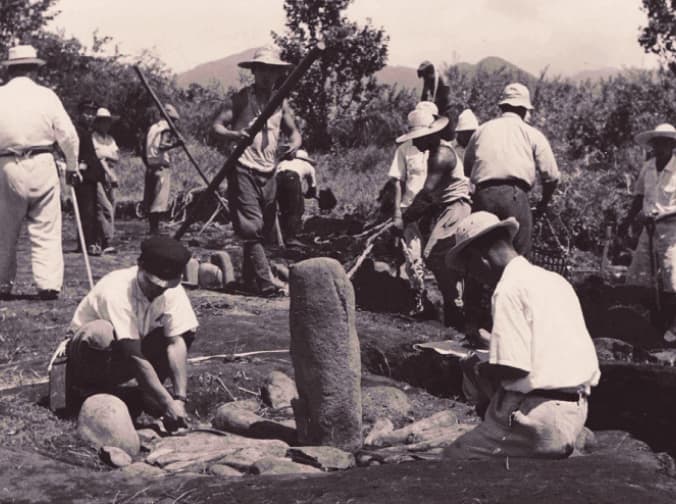
Conservation of natural setting
Not only archaeological sites but also their natural setting have been conserved. Starting with excavations by the Committee of Cultural Properties in 1951, each time a survey is conducted, and the distribution of the excavation is expanded, and underneath of the arranged stones is also on the process of investigation. In addition, the Oyu Stone Circle Center was built in 1998 in order to improve the environment around mainly the two stone circles and to provide comprehensive guidance and hands-on learning to visitors, also a forest called ‘Jomon no mori’ which reproduces the ecology of the Jomon period has been maintained.
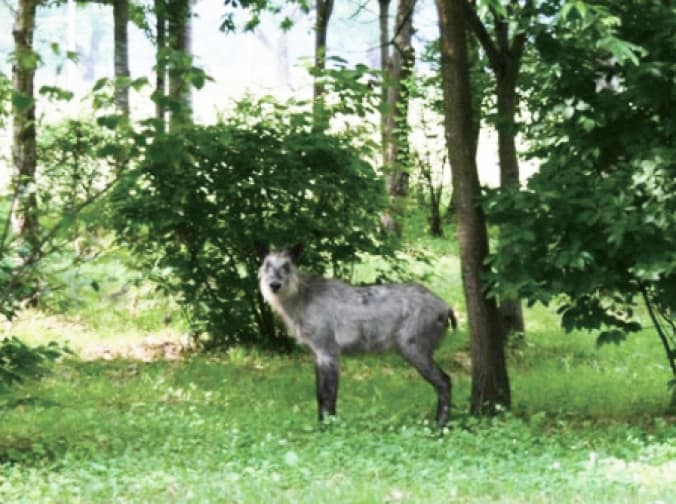
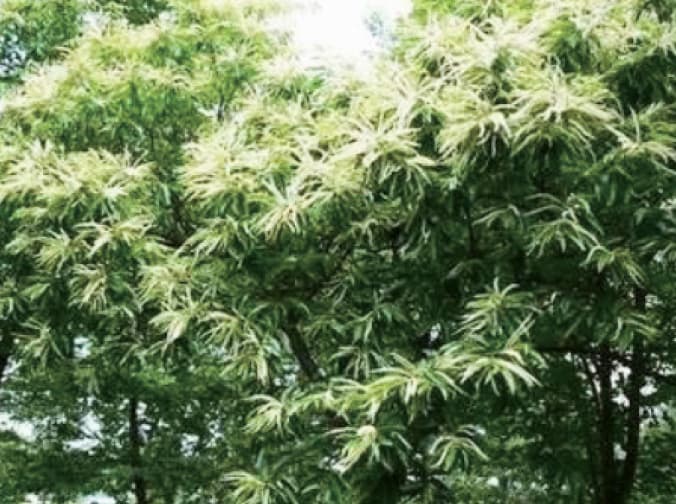
UNESCO World Cultural Heritage Site
Jomon Prehistoric Sites in
Northern Japan
Jomon Prehistoric Sites in Northern Japan
Jomon Prehistoric Sites in Northern Japan are cultural heritage sites that convey the lives and spiritual culture of people who settled through gathering, fishing, and hunting for more than 10,000 years. They consist of 17 ruins located in Hokkaido, Aomori, Iwate and Akita prefectures. In northern Tohoku, Hokkaido, settlement began about 15,000 years ago against the backdrop of forest resources such as beech and chestnut and marine resources nurtured by the waters where warm and cold currents meet. After that, while responding to environmental changes, life by gathering, fishing, and hunting continued for a long time. During this period, a sophisticated and complex spiritual culture was also fostered, as seen in clay figurines and various patterns of arranged stones placed in circular shape.
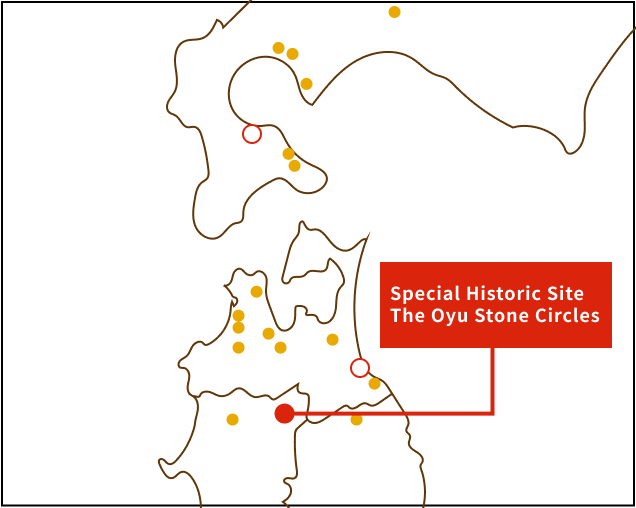
Special Historic Site
One of the features of the current Japanese legislation for the
protection of cultural properties is that cultural properties
are designated and protected in two stages. Monuments include
archaeological sites, scenic spots, animals, plants, geological
minerals, etc. Important archaeological sites are designated as
historic sites, and among them, "those of particularly high
academic value and symbols of Japanese culture" are designated
as special historic sites. Currently, there are 1,795 historic
sites nationwide, of which 62 are designated as special historic
sites (as of November 1, 2017). All of them are famous ones that
appear in our school textbooks.
Among them, there are only four special historical
sites of the Jomon period in Japan, and they are of particularly
high academic value.
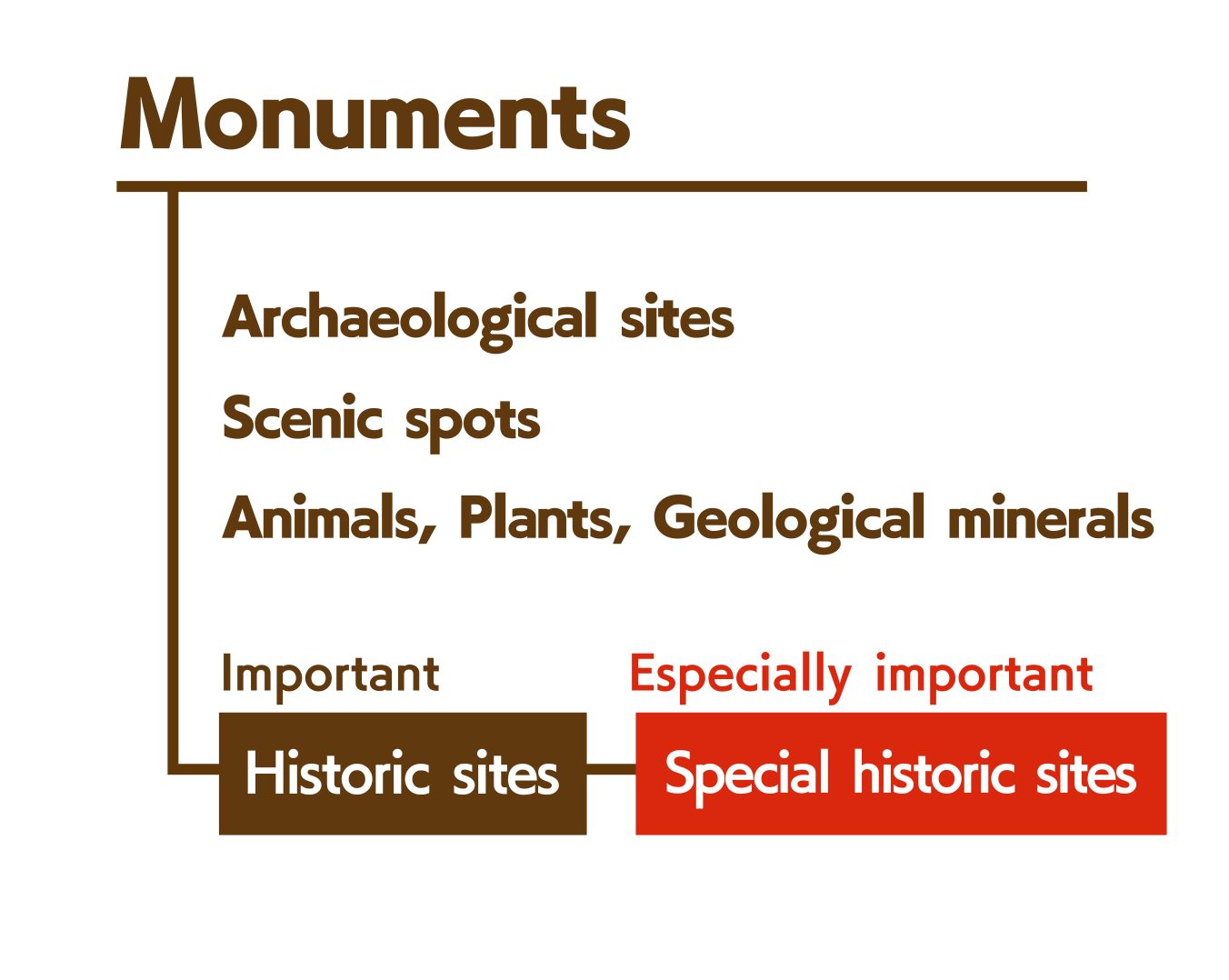
Special Historic Site

The time when the Oyu Stone Circles were built was in the fourth
phase of the storyline the Jomon period traced. The first phase is
the formation of the settlement (the biggening of early stage),
the second phase is the establishment of settlement (early stage),
the third phase is the development of settlement (early to middle
stage), and the fourth phase is settlement maturity (late to the
last stage). The Oyu Stone Circles played a role in strengthening
the bonds between villages (mura) amid the cooling of the climate
that began in the middle of the previous period and the progress
of villages becoming smaller and more decentralized. It is thought
that the people from multiple villages worked together to create
and maintain large-scale communal ceremonies and cemeteries that
served as "spiritual bases".
The Oyu Stone Circles are an important archaeological site that is
spiritually important because it gives a glimpse of the transition
of the Jomon spiritual culture that leads to the spirits,
ancestral spirits, and nature worship of modern Japan and Japanese
people.
Map of the site
Special Historic Site / UNESCO World Cultural Heritage Site | The Oyu Stone Circles The Oyu Stone Circle Center
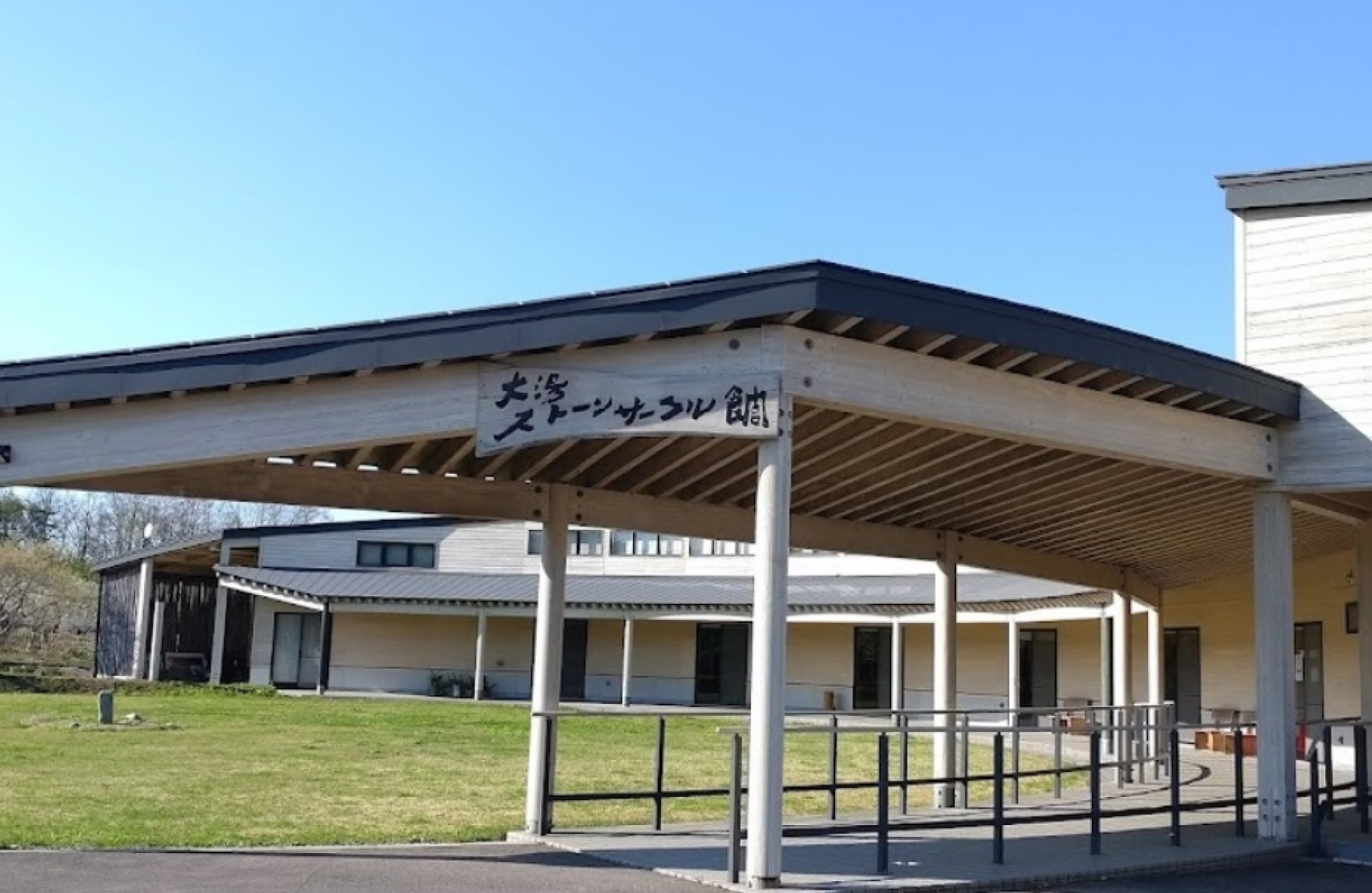
The Oyu Stone Circle Center is a guidance facility for the Oyu Stone
Circles, a special historic site.
In the exhibition hall, you can see panel displays to deepen your
knowledge about the ruins, as well as discovered artifacts.
In addition, you can experience making magatama pendants and
earthenware.
Admission free, except for to enter the exhibition hall
Facility Information
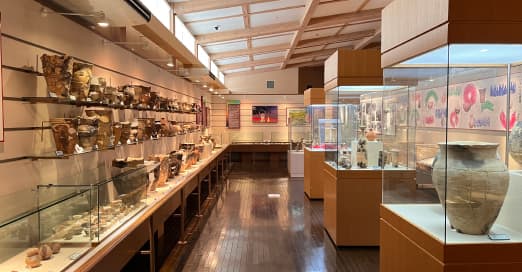
Exhibition Hall
In the exhibition hall, you can see panel displays to deepen your knowledge of the ruins, as well as the artifacts that have been discovered. It is also recommended to visit with commentary from a guide.

Jomon Cinema
With images projected on a three-sided panoramic screen and a powerful image using the 5.1ch surround system, you can think about the Jomon period and feel close to the Oyu Stone Circles.
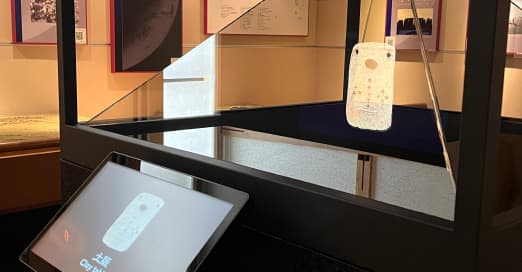
Hologram
You can enjoy not only earthenware, clay figurines, and stone
tools, but also sundial-like stonework with holographic
images.
You can see the relics and remains of the Jomon
period from various angles.
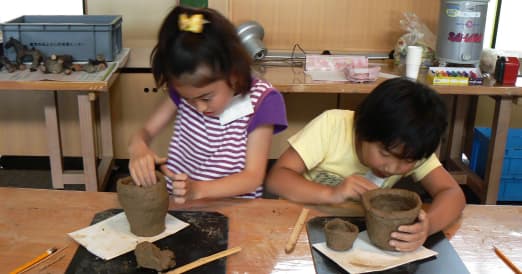
Jomon Workshop
In the experience workshop, you can experience making earthenware such as doban-kun (clay tablet), making kumiishi (arranged stones) magnets, making magatama, etc. It takes about 30 to 60 minutes.
Three Highlights
-
Characteristic ‘Jomon’ pottery
In the Oyu Stone Circles, there are many exhibits where you can feel the depth of the Jomon, including earthenware called "Oyu-style pottery" with intricate and continuous S-shaped patterns and rope patterns in a strip-shaped pattern!
-
Abundant guidance footage
Before you actually go to see the site outside, you can deepen your understanding of it by carefully watching the guidance video installed in the entrance hall.
5 verses are available anytime;
①About the Oyu Stone Circles ~Symbol of Jomon Spiritual Culture~
②From the dawn of the forming villages (Mura), to the time when the Oyu Stone Circles were established
③The Earthenware and the Jomon food
④Protected ruins (Discovery ~ Excavation ~ Utilization)
⑤Looking to the future -
‘Jomon Cinema’
by extra-large screenAt the Manza Hall of the Oyu Stone Circle Center, a cinema video titled "JOMON Oyu Kokoro-no Tabi” (Spiritual Trip to the Jomon in Oyu) is broadcast!
Why don't you experience Jomon with a high-quality, large-screen screen equivalent to a total of 12K and powerful images with 5.1 surround?
Our Specialists
Having accompany and listening to our guides’ explanation, you can get to know the site more deeply
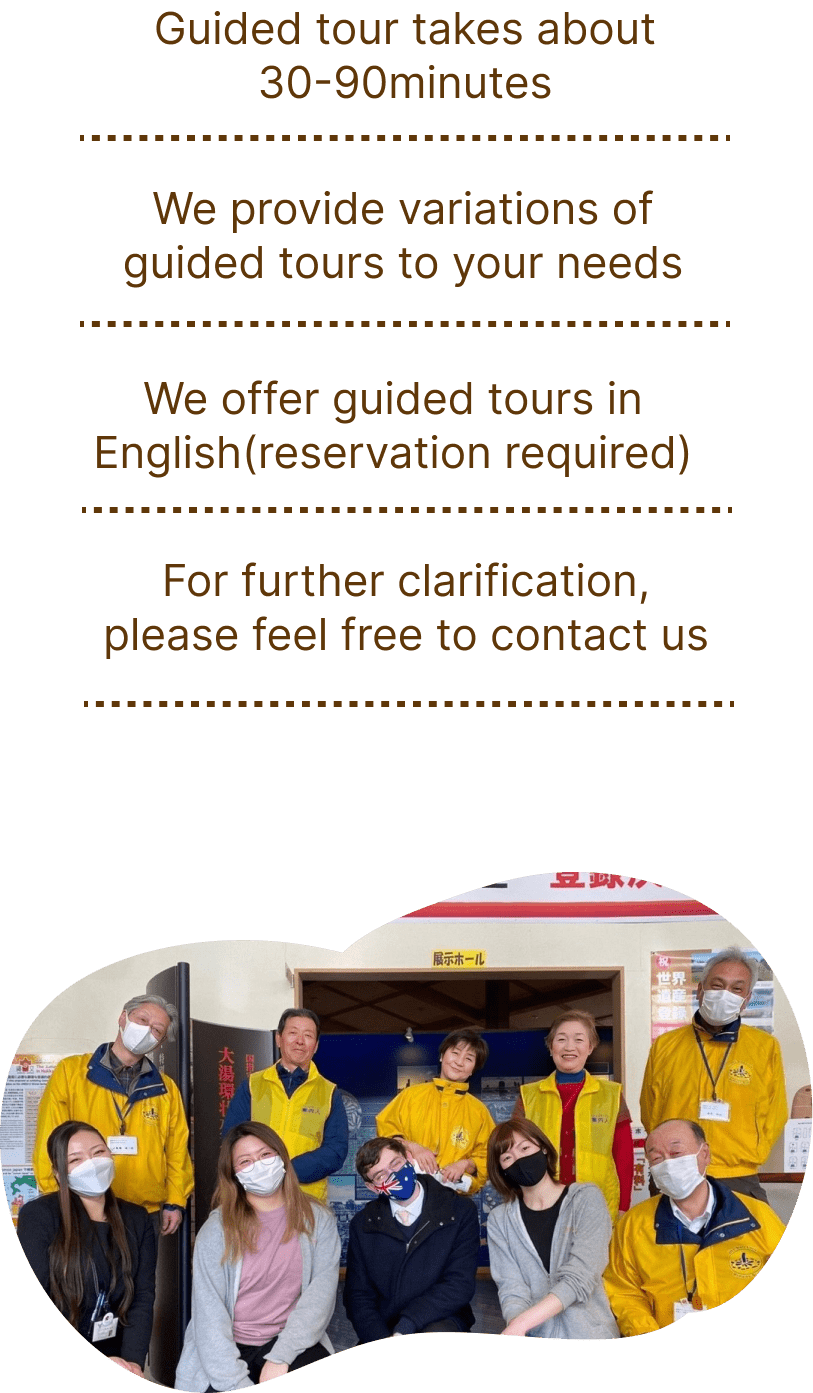
Schedules vary depending on the time of year, please contact us for more details.
loved by everyone Thorough verification of Doban-kun
In the Oyu Stone Circles, various ruins and remains from the Jomon
period have been discovered. There are two types of remains;
earthenware, the tool which is a daily necessity, and the other ones
which are considered to be tools for rituals and festivals.
Let's take a look at the clay tablet called "Doban-kun", which
is considered to be one of the latter tool.
What is Doban-kun?
Doban is a flat-shaped object made of clay. On the other hand,
Ganban is a flat shaped object made of stone. Many of these have
been excavated from ruins from the late Jomon period to the last
of late Jomon period.
It is thought that the clay tablets were used to perform some kind
of ritual on the stone circles.
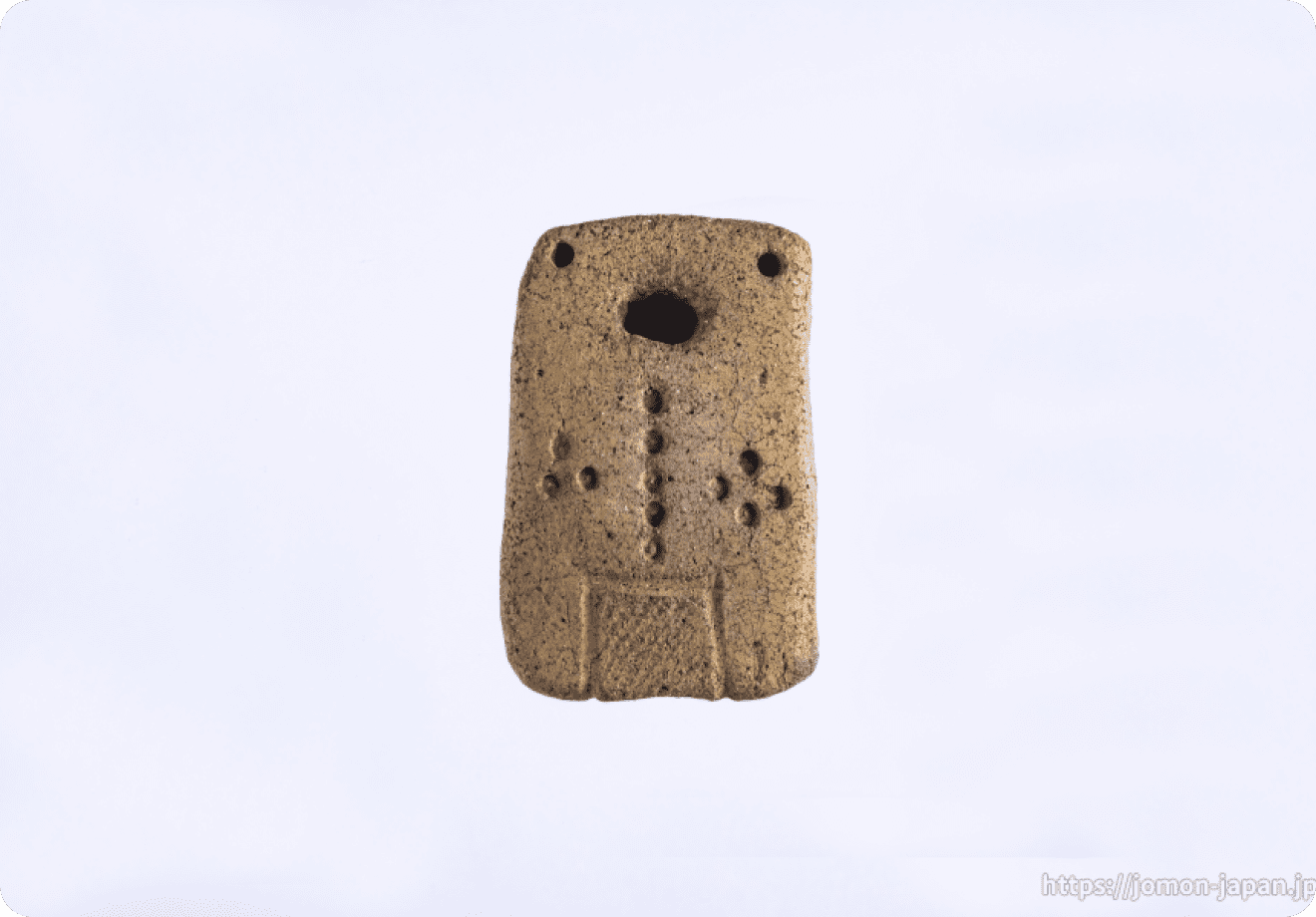
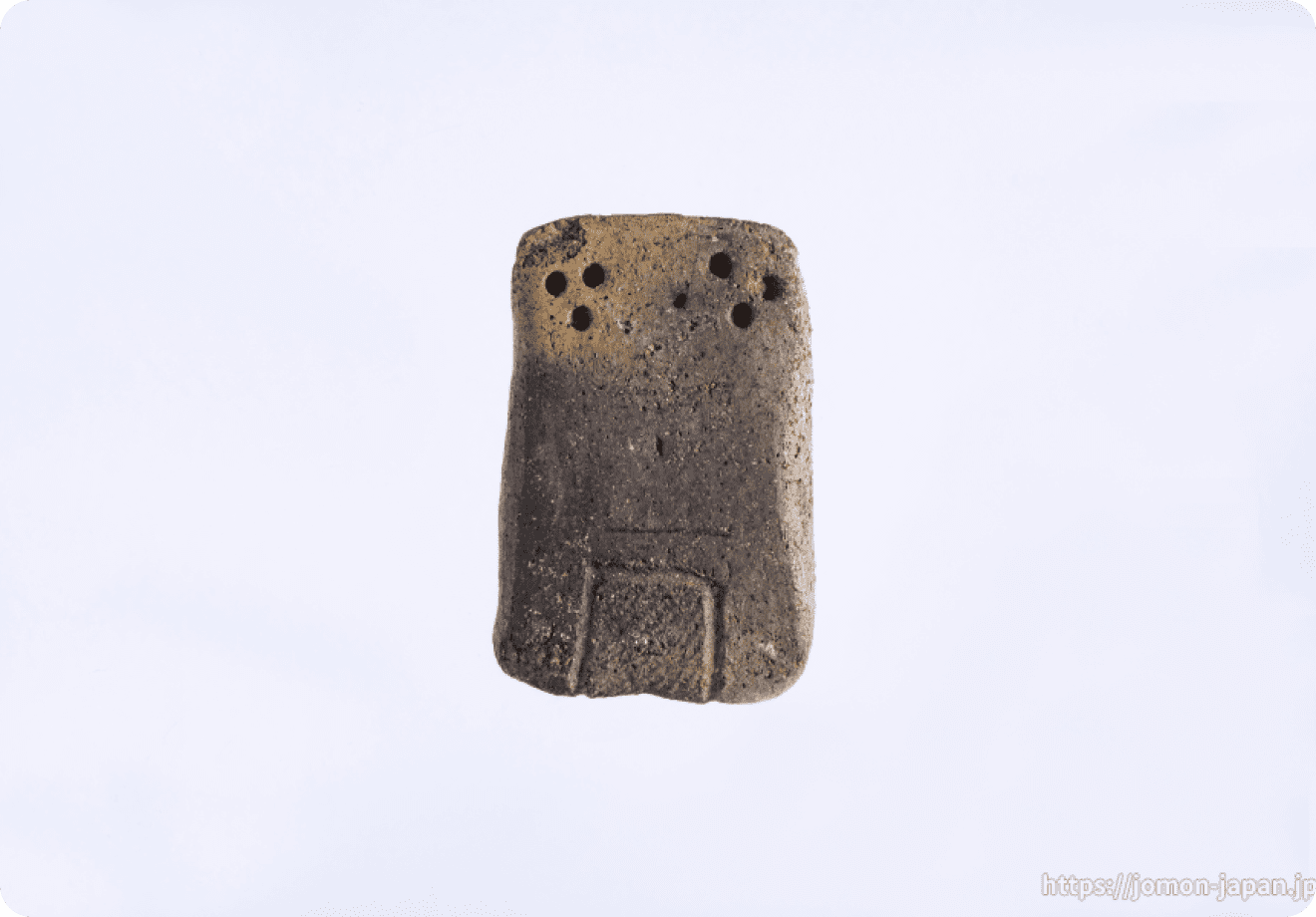
Doban-kun Profile
- Place of Birth
- East side of the Nonakado stone circle
- Age
-
Approximately 3500 years old
(Born around 1500 BC) - Height (length)
- 58mm
- Chest circumference(width)
- 37mm / 15mm
- Weight
- 48.39g

Latest Research Results
There are holes thought to be used to counting numbers from 1-6 on
Doban-kun.How to count each hole is as explained in the illustration
below.
Even though it is a tool for counting, it also has a cute
appearance, which was very tasteful for people at that time.
And in fact, there is another hole for Doban-kun. It is on the
bottom part of it.From this, there is also a theory that Doban-kun
actually was imitating a female. In that case, it is not Doban-kun,
but Doban-chan.
There is no difference in the cuteness of Doban-kun between the
genders, but there are still many mysteries about Doban-kun.
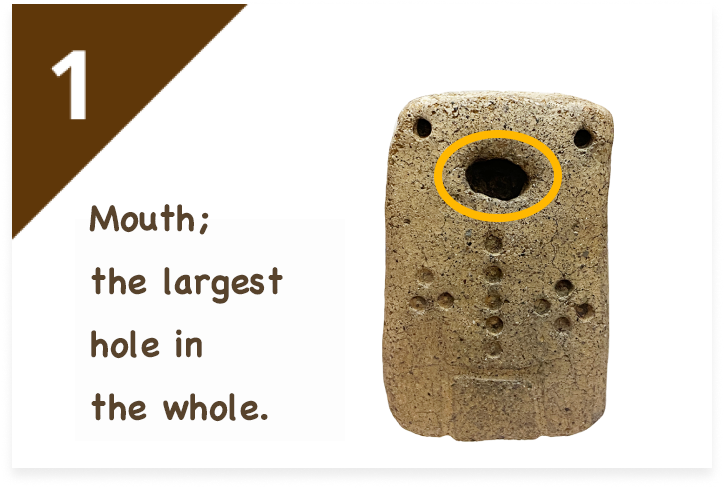
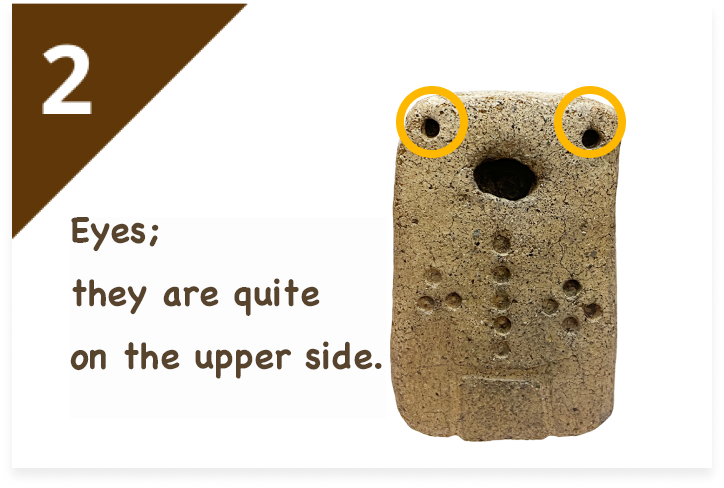

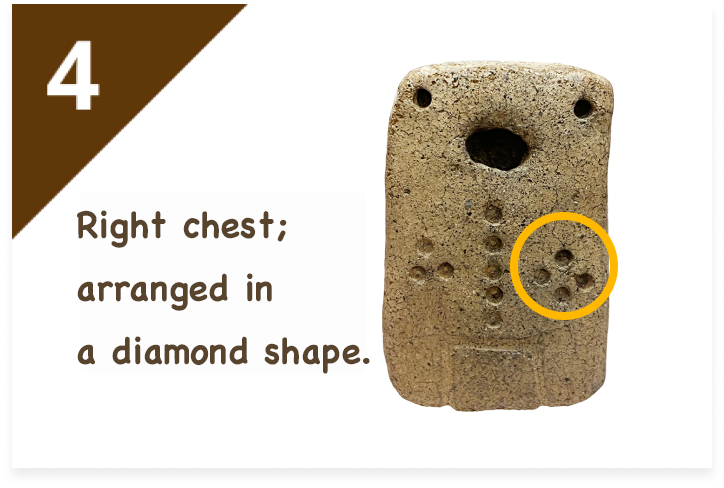
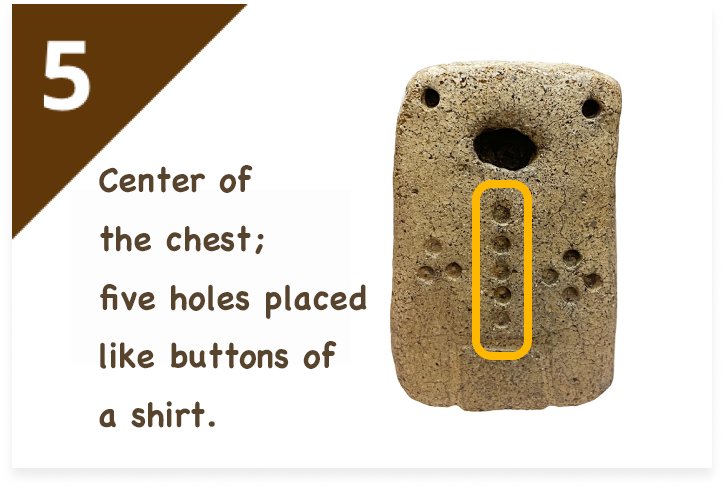
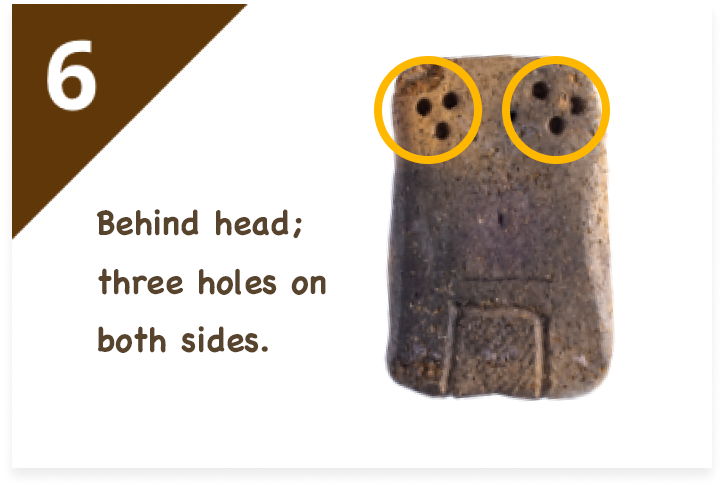
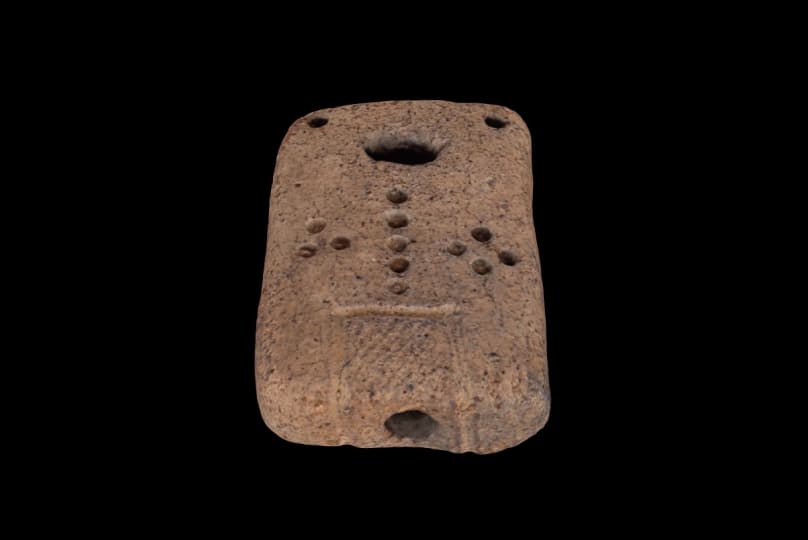
Doban-kun is actually Doban-chan?
There is also a hole at the bottom, so it leaves us a theory
that it is imaging of a female figure.
The truth is?
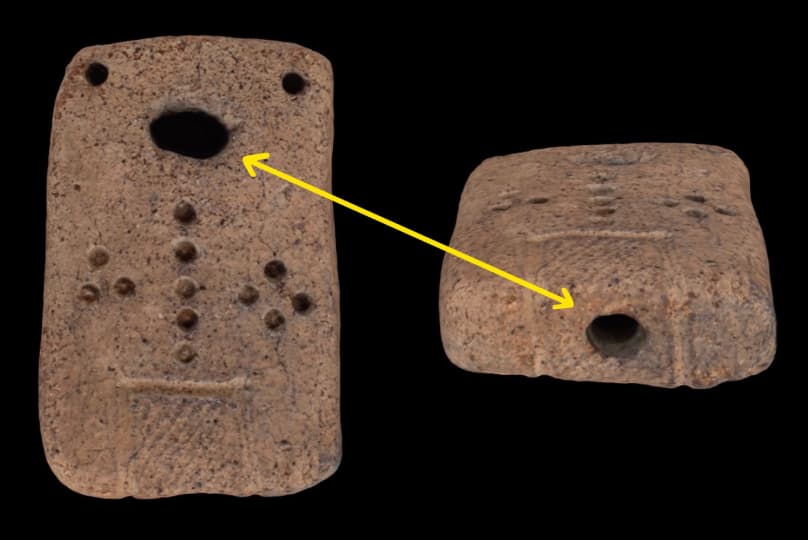
Doban-kun’s hole was penetrating!?
The big mouth is cute! However, the latest research has found that this hole penetrates to the bottom hole. From this, it is considered to be that the Jomon people understood the structure of the human body.
Special Historic Site / UNESCO World Cultural Heritage Site | The Oyu Stone Circles The Oyu Stone Circle Center
Hours and admission
-
◆Normal season: April 1 – October 31
Opening hours 9:00am – 6:00pm
No closed days -
◆Snowing season: November 1 – March 31
Opening hours 9:00am – 4:00pm
Closed days Monday and around year-end and New Year holidays
※If Monday is a national holiday: weekday from the following day is closed
Admission fee
- Admission fee
- free
Exhibition Hall
- Adult
- ¥320(for group travelers: ¥250 per person)
- Children
- ¥110(for group travelers: ¥90 per person)
※A group must contain more than 20 people

- Board of Education | The Oyu Stone Circle Center
-
Postcode:018-5421
45 Manza Oyu Towada Kazuno city Akita prefecture
TEL:0186-37-3822 FAX:0186-30-4303




